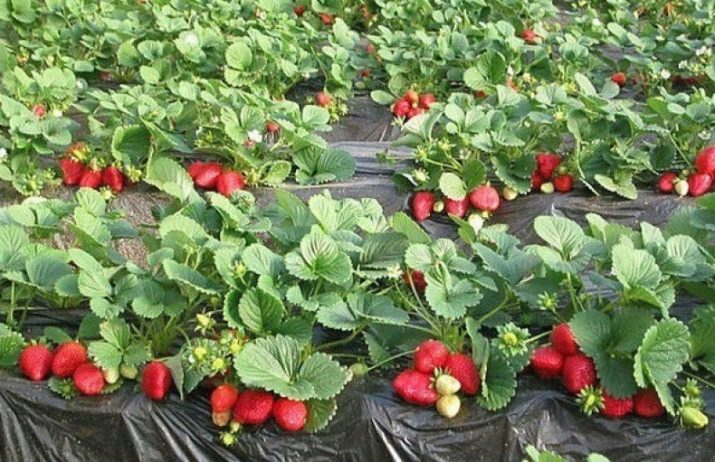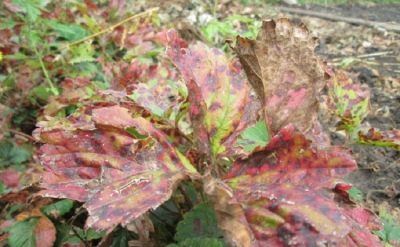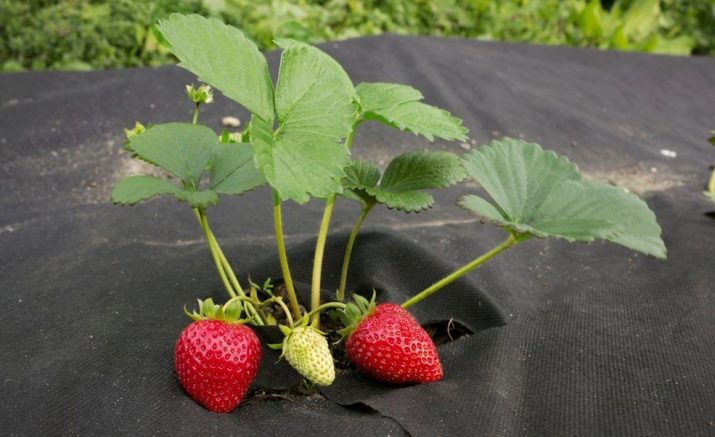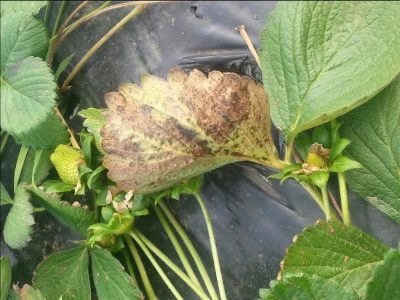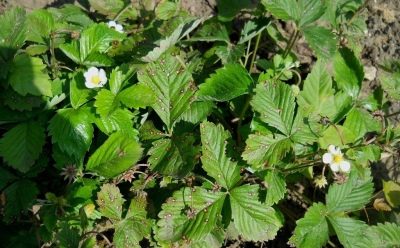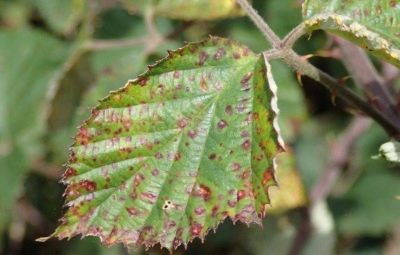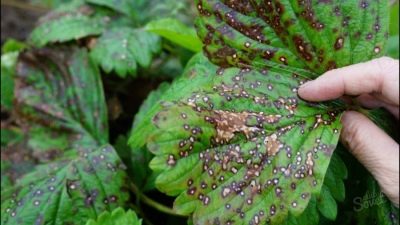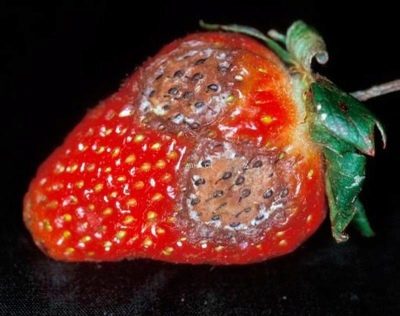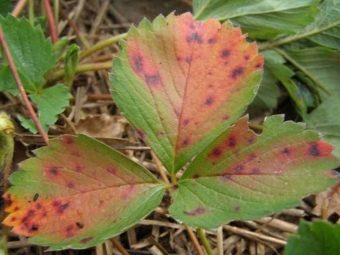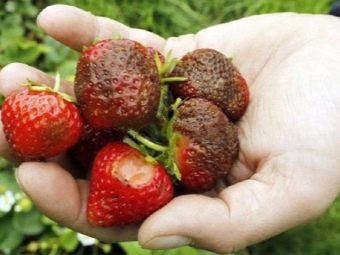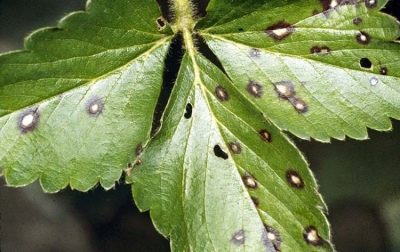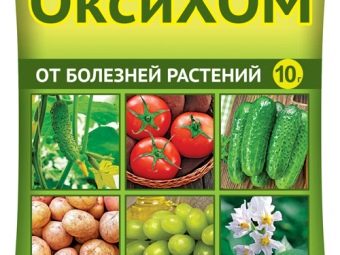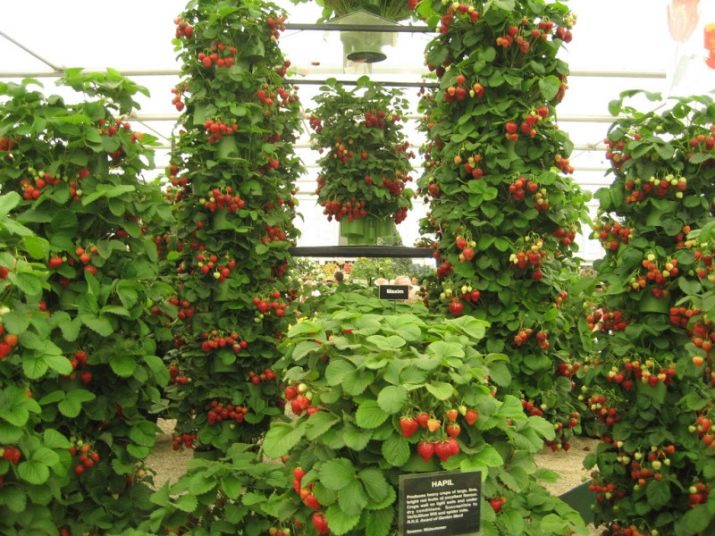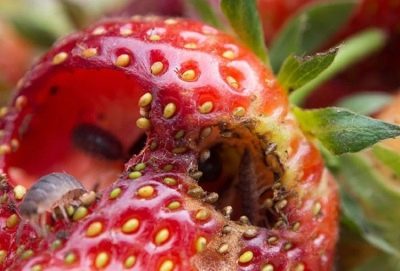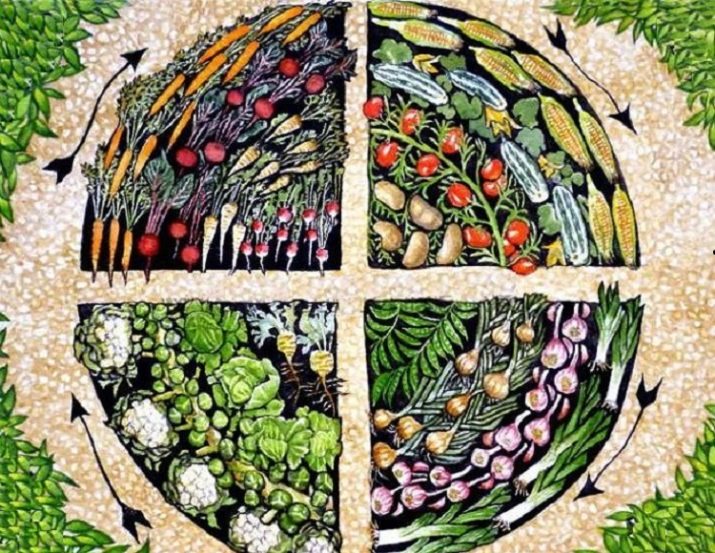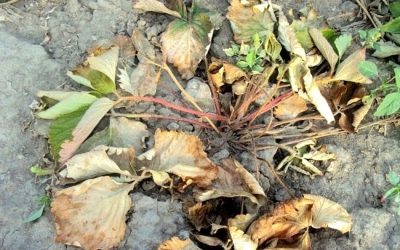Strawberry treatment for spotting
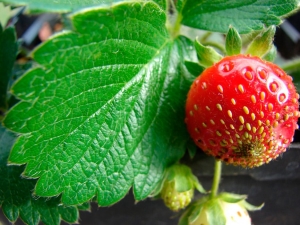
Strawberry is a very tasty berry that many people love.It produces extraordinarily fragrant desserts, the taste of which is enjoyed by both adults and children. However, strawberries, like any other plant, are subject to certain diseases that need to be properly prevented or treated if you grow such a berry in your plot. Today we will examine in detail how to deal with spotting.
Disease description
Every summer resident who grows fragrant strawberries on his plot should be aware that she is prone to such a disease as spotting. It can and must be fought. It is equally important to detect it in time.
The causative agent of this common berry disease is a fungus called Marssonina potentillae. There are several varieties of this disease, but most often the sweet berries are faced with brown spot.
In most cases, the problem makes itself felt during the fruiting of strawberries. It was during this period that summer residents can meet on their plots strange landings of brown color.
From August to October, the activity of this disease is at its peak. Ailment can affect from 60% or more of hardwood. In such conditions, the lion's share of the leaves simply dies. As a result of such processes, the plant loses the ability to feed on oxygen. In addition, the natural and necessary processes associated with photosynthesis are disrupted.
This common fungal disease of strawberries is most often activated in conditions of high humidity. The same brown spot can begin at absolutely any temperature above zero.
If the fungus does not die in conditions of severe subzero temperatures, it simply stays at rest. For this reason, with the arrival of the next season, the strawberry yield may significantly decrease.
Types and symptoms of infection
Do not think that spotting is a simple landing disease that does not have a large number of subspecies. In fact, this disease manifests itself in different ways. Let us consider in more detail what variants of spotting exist, and what symptoms they accompany.
Brown
According to experts and experienced gardeners, brown spotting is most often found. Otherwise, this disease is called angular. If it occurs, round purple specks appear on the leaves of the plants, which after some time become brown in color. During the development of the disease, the spots are complemented by dark edges, which are especially noticeable from the underside of the leaves.
At first, the spots are located on the edges of the sheet plate, and then they begin to gradually merge and spread in the areas between the veins. Usually, the shape of these lesions acquires an angular structure, narrowing closer to the central part of the sheet.
The fabric thus destroyed dies. In conditions of high humidity, spore-bearing fungal pycnidia appear on brown spots.
Since this type of spotting grows most actively in August-October, very often inexperienced summer residents confuse this destructive process with the natural death of leaves on the threshold of the coming cold weather, which is why they do not take any measures to eliminate the problem.
This is the main mistake - during this period the budding of fruit buds is carried out for the next year, and the massive death of the leaves makes the plants weaker, reducing their resistance to low temperatures. Yes, and the amount of future harvest from this can suffer greatly.
Rusty
There is also the so-called rust spot, which can affect not only strawberries, but also other types of plants. The causative agent of this dangerous disease is a special rusty fungus.
The main symptom of this disease is that yellowish pustules of various sizes and shapes appear on the leaves of the plant. As the disease develops, these lesions begin to merge and form strips of rusty hue.The leaves at the same time begin to rapidly turn yellow, and then completely fall off. When pustules go cracked, fungal spores are selected from them.
The presence of rust contributes to the powerful evaporation of liquid from the foliage. Because of this, the plant stops receiving nutrients in the proper amount. Further photosynthesis deteriorates, and as a result, not very good berries grow in small quantities. If you noticed the first “bells” on the landings, indicating the appearance of rusty spot, you must urgently take appropriate measures. Do not delay the time, do not carry the treatment "for later." In the early stages of the development of the disease, the damaged parts of the plant must be removed, and then the plantings should be treated with funicides.
The presence of characteristic rust spots can also be the first sign of a disease such as anthracnose. This ailment is also fungal, and is encountered in both southern and temperate latitudes. This disease makes itself felt in small spots that have a rusty or red hue.
Such damages differ in that they have a rather thin border. Over time, damaged leaves simply dry out.
Fabrics of the lamina around the appeared formations grow further, because of which the affected areas begin to crack, and then break. Foliage does not die off, but becomes a source of infection. That is why, with the initial signs, it is necessary to start processing the plantings as early as possible in order not to let the disease grow further.
In many cases, the defeat of the foliage "starts" from the edges, because it is here that moisture accumulates, which drains from the surface of the sheet plate. Such spots are striking burgundy fringe. On cuttings of leaflets and peduncles, anthracnose is expressed in dark brown spots, which have a characteristic oblong shape. When the damage by the ring type is merged, the leaf or stem just dries out.
Anthracnose can damage not only the green elements of the bush. Often it extends to the very berry. For example, on the ovaries, the disease manifests itself in the form of noticeable dents of black color. On more mature fruits with anthracnose, you can notice watery specks with a dry top (as a rule, they go deep into the strawberry pulp). Sick ovaries and fruits begin to mummify and become carriers of infectious diseases.
In order not to confuse anthracnose with other varieties of spotting, it is possible to turn to a simple diagnosis. To do this, take the damaged part of the landing and place it in the water. After about 5-7 days, a mold will form on the plant basis with characteristic pores in the form of pollen. According to its color, it will be possible to reveal a specific kind of pathogen fungus. For the "provocateur" anthracnose peculiar pink-red color of different levels of brightness.
Brown
If the leaves of the berry are covered with different-sized formations of brown color, then it means that the plant has become a victim of the pathogen of brown spot. The initial outbreak of this common disease occurs in April - May, and the peak of development falls in July - August. The passage of such processes in the end leads to the fact that 80% of leaf blades just die.
At first, the formed spots are small and have a brown-red color. Then they only grow, and then merge completely, acquiring a color close to black. On the tendrils and cuttings of foliage, brown spots are usually very small.
First, the leaves below are affected, especially if there is no proper care behind the strawberry beds, and they are littered. Such parts of strawberry planting as stems, berries, sepals and stems are mainly prone to brown spot.
This affliction is insidious because in the later stages often imitates the full recovery of the plant. If at the right time not to process the berry beds with fungicides, then in September the brown spot will once again make itself felt, attacking the leaves of strawberries.
It is necessary to take into account the fact that the presence of brown spots on the foliage of the plantings can also speak of such a disease as white spot. When it brown formations on plants first have a round shape, and in diameter can reach up to 2 mm. Such damage after a certain time acquires a border of burgundy hue. When the spots in the center become brightened, they will begin to collapse, and holes will form on the leaves.
White spotting can hit not only the leaves, but also other parts of the landing. For example, the purpose of damage may be the stem, leaf stalks and even fruit.
On berries, such a disease is manifested by the formation of black spots near the seeds. In the future, the disease gets to the soft tissues, after which the berries acquire a dark brown surface.
Methods of struggle
There are several methods of dealing with strawberry blotch. We will get acquainted with them.
- It is imperative to destroy all damaged bushes. If you want to properly treat the planting, then do not feel sorry for the infected specimens, otherwise the problem will let you know about yourself again.
- Also sanitary cleaning of a bed will be required. Refer to fertilizing plants using phosphate-potassium fertilizers (do not use nitrogen options).
- Try to get rid of excess moisture in the garden.
- Strawberries can be treated with drugs such as copper oxychloride or Bordeaux mixture. To handle planting with these popular and effective means is necessary during the immediate regrowth of the foliage. Carrying out these procedures is also permissible before the flowering of fruits and after their full collection.
- If the damage by spotting is not a single one, but has already become widespread, then you can turn to the use of various fungicides. To do this, suitable tools such as "Oxy", "Skor" or "Ridomil Gold." Consider that with special preparations it is necessary to process not only the upper, but also the lower part of the strawberry leaves, otherwise there will be no point in the indicated actions.
Prevention
Equally important is the proper preventive work to prevent the formation of fungal diseases of strawberries. There are certain measures that can help avoid such ailments. Let's get acquainted with their small list.
- Use only high quality and healthy seedlings. It is advisable to turn to hardy varieties that are not subject to fungal diseases.
- Grow strawberries and strawberries in open and dry areas. It is advisable to place these plantings on higher and vertical beds, where excessive moisture will not accumulate, contributing to the development of fungus.
- Always destroy the remnants of vegetation that previously belonged to diseased bushes. It is important to remove weeds.
- Planting strawberries is very important to do correctly. Too dense plantings will not be well ventilated, which is why spores of pathogenic fungi will rapidly multiply in conditions of high humidity.
- Be sure to follow the rules for adding feedings. Remember - the mycelium develops very quickly on the landings, in which there is an excessively high nitrogen content.
- Get rid of insect pests, because very often they are responsible for spreading fungal spores and various infections.
- It is very important to adhere to a crop rotation. If a culture has become infected with spotting, it is moved to its original place no earlier than in 4-5 years. It is advisable to plant it in those places where carrots, beans or garlic were previously grown. Experts say that it is undesirable to plant strawberries where cucumbers, potatoes, corn, tomatoes or eggplants were previously grown.
- Highly effective prevention of strawberry diseases will be the treatment of bushes with products containing a large percentage of copper. To carry out these procedures is required at least 2 times a year - before flowering and after harvesting.
Useful tips
Experts and experienced gardeners do not recommend planting strawberry bushes in fresh mullein or bird droppings. Instead of these popular products, it is better to use rotted manure.
When spraying a culture with specialized preparations, it is very important to make sure that the product used reaches both the top and the bottom surface of the sheets.
Do not think that the fallen damaged strawberry leaves simply "die." It will be the source of the spread of spotting. Infection will go to the next healthy bushes.
That is why it is so important to proceed immediately to treatment, having discovered the first signs of a budding fungus.
Do not bury or throw away leaves with rusty spots, as the fungus will not die from this. He can safely survive the winter, and then move on to the attack on healthy plants.
In time, not eliminated anthracnose will damage not only the leaves, but also the berries. With this disease it is necessary to fight in the early stages, otherwise it will destroy the whole bush.
Tips for caring for strawberries, see the following video.

